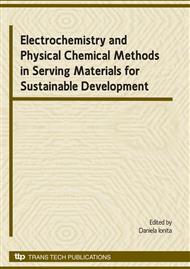p.45
p.49
p.53
p.57
p.61
p.65
p.69
p.73
p.77
Dynamics of Dental Pellicle Formation - In Vitro Analysis of Time Dependant Binding Behavior by Surface Plasmon Resonance and the Influence of Oral Therapeutics
Abstract:
: The pellicle on oral surfaces represents a central interface for the formation of biofilms. Among other things it causes the first adsorption of bacteria. The dynamics of pellicle formation, on tooth surfaces and the influence of oral therapeutics on the pellicle structure are fairly unknown. With the method of surface plasmon resonance (SPR), the formation of salivary pellicle structures on hydroxylapatite (HAP) surfaces covering a very thin (~50nm) layer gold on a glass prism was recorded in real time without labeling or destruction. As pellicle forming substrates natural pooled human saliva (NS) and artificial saliva (AS) were used. To simulate the influence of therapeutic additives on the dynamic of the pellicle forming process, a chlorhexidine preparate (Chlorhexamed Fluid® CHX) on two different concentrations was selected. The binding behavior of a NS and a preparation in terms of an AS were compared. The layer was largely stable against rinsing with buffer. The application of CHX preparations in two different concentrations as an example of an oral therapeutic additive revealed a complex dynamic of adsorption. CHX did not lead to any visible destruction of the pellicle. The introduced method is an excellent tool to illustrate the dynamic effects of pellicle formation or pellicle reorganization by measuring the increase or decrease of the SPR signal in real time.
Info:
Periodical:
Pages:
77-80
Citation:
Online since:
September 2009
Price:
Сopyright:
© 2009 Trans Tech Publications Ltd. All Rights Reserved
Share:
Citation:


